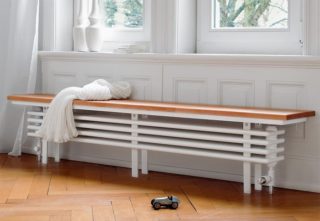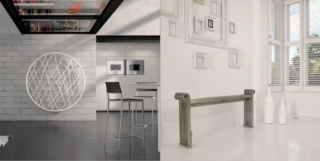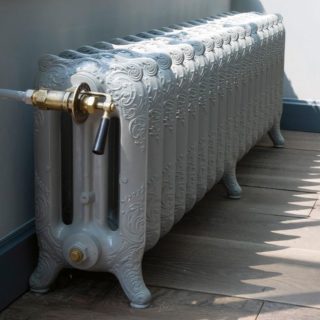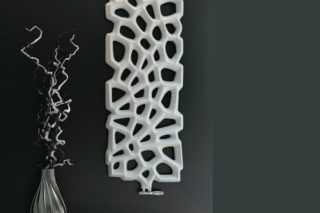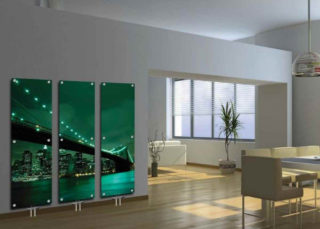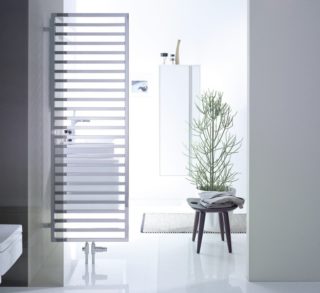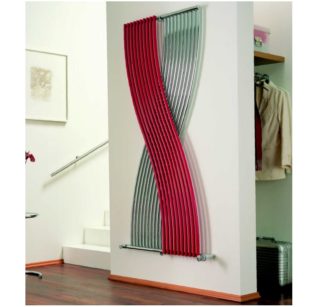Thorough heating of the house plays an important role, because heat creates an atmosphere of living space and comfort. The source of the microclimate are heating radiators. Devices for heating are constantly being improved. Design batteries are a harmonious and exclusive interior element.
The concept of design radiators
Designer heating radiators are units that heat the room and act as decorative objects that can give the house a special style.
The beauty and originality of devices is manifested due to the shapes, sizes, textures, colors and methods of placement. These factors affect the choice of radiators in a particular room interior.
Pros and cons of decorative heating appliances
The advantages of decorative radiators depend on the specific characteristics.
- A variety of shapes (for example, square, abstract) makes beautiful radiators adaptable to the features and style of the room.
- The functionality of designer radiator products is manifested in the fact that they can act as clothes dryers, seats), stands for interior items, lamps, decorative panels.
- The choice of materials - metal, stone, glass and even wood - determines the texture and color of the instruments, which is so important when creating a room project.
- Beautiful heating radiators can be made to order according to a specific sketch, which makes them one of a kind.
Design units provide great opportunities for the implementation of bold interior ideas.
The disadvantages of design radiators include:
- The cost of interior products for heating, which is determined by non-standard forms, textures and design.
- The unreliability of some types of radiators is manifested in their lack of strength. For example, this applies to aluminum or glass products. The former as a result of mechanical influences can be strongly deformed, and the latter can break.
Disadvantages - there is still no reason to abandon the use of designer heat exchangers, they should be introduced gradually. For this, it is important to carefully analyze where their use will be especially relevant.
Materials for decorative batteries
Interior heat exchangers are made of different materials, with the help of which any customer wishes are realized. Raw materials used for production: metal, glass, stone, wood.
Cast iron
Design cast iron radiators are expensive products, as they are most often performed in a vintage style. When creating a three-dimensional drawing, laborious metal working techniques are used.
Cast iron heating products are strong and heavy. The latter characteristic complicates the installation process, since you have to work with a lot of weight. Cast iron also has a high heat capacity.
Bimetallic
Combined versions of units have concise forms to create a modern style of the room. Bimetallic heat exchangers are made in the form of steel, copper, aluminum panels or sections. These materials are not susceptible to corrosion processes. Bimetal is also able to withstand large pressure loads, which allows you to heat the premises efficiently and quickly.
Steel
Steel is a durable material, therefore, designer radiators made of this metal are practical and at the same time are aesthetic interior items. They are in the form of tubular and panel products. Heating steel systems almost do not oxidize, do not deform under mechanical and other influences, are relatively light in weight, which simplifies installation.
Glass
Unusual glass heating elements are suitable for consumers with exquisite taste. They consist of two plates, of which the bottom is a solid panel, since it receives heat, and the top carries a decorative function.
Stone
Stone radiators are environmentally friendly heating options. Batteries have an advantage over other analogues - slow heat transfer. Thanks to this characteristic, the rooms warm up more thoroughly. Also, stone radiators do not create noise during operation, do not dry the air. Of the minuses - a high price.
Varieties of decorative radiators and application
The most common and sought after designs of design radiators are vertical and horizontal. Each of them has its own characteristics.
Vertical
Batteries placed vertically on the wall make the room particularly stylish. By design, such panels have a small width, but a large height. This allows the use of radiators in rooms with ceilings from 2.5 meters.
Units operate from central heating or electricity. They can act as a complete heating system or its additional elements.
Horizontal
Horizontal batteries are divided into two types: tubular and panel. The first option involves steel products, and the second - from a copper-aluminum heat exchanger and a panel that is made of glass or wood.
During installation, such units occupy mainly the lower part of the wall. This is explained by their small height, although sometimes according to the design idea a horizontal battery of an unusual shape can be located, for example, above a sofa. Allocate wall units and floor.
Decorative batteries are used everywhere. They can be seen in the house, apartment, museum, studio, fitness club. The use of heating design batteries is a combination of beauty and functionality.
The choice of stylish heating appliances
Design heat exchangers are purchased in construction stores, specialized boutiques or from private craftsmen. The choice of various units depends on many factors:
- the interior of the room;
- power devices;
- shapes and sizes;
- material;
- ways to connect to the heating system (water, electric, gas);
- prices
- manufacturer.
It is worth paying attention to the power characteristic, which depends on the degree of heat transfer of the radiator. This is an important factor, as not only the decoration for the room is selected, but also a reliable source of heat.
To determine the required battery power, you need to consider the following features of the room:
- quantity and heat permeability of windows;
- the number of walls facing the street;
- the presence of doors;
- ceiling height;
- the shape of the room;
- furnishings;
- type of house.
When choosing, it is important to check all seams, fasteners, surfaces for possible defects.
